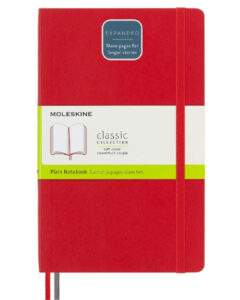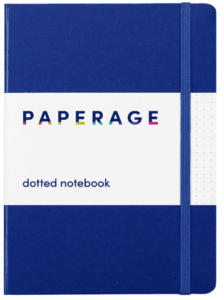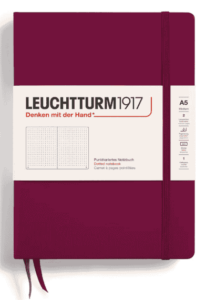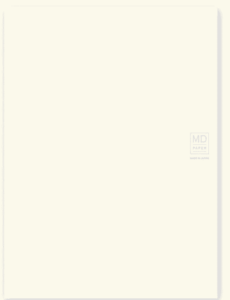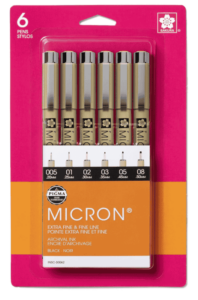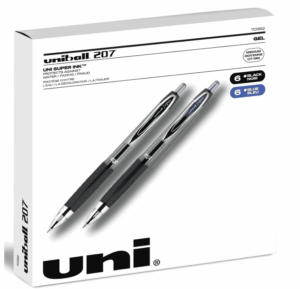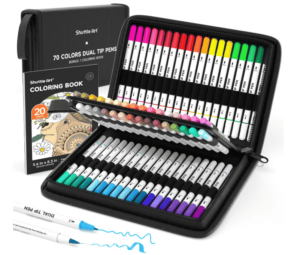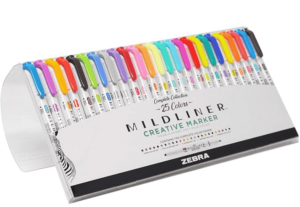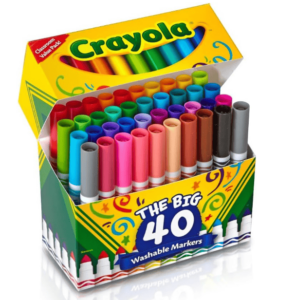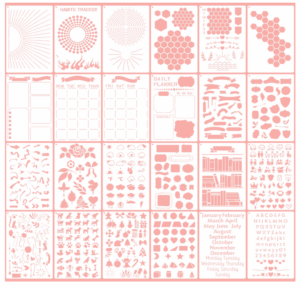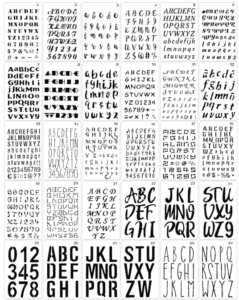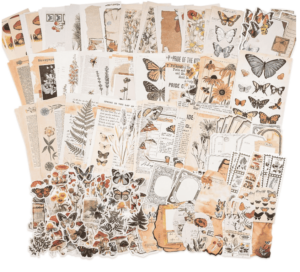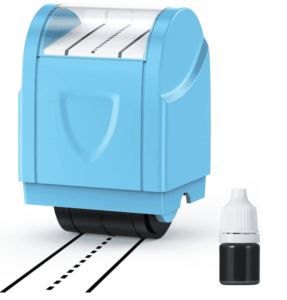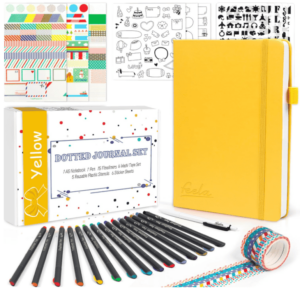Starting something new can be daunting and overwhelming. But do not worry, this short course on how to write a personal journal like a pro is just the thing you need to get started.
Have you ever thought about starting a personal journal but didn’t know where to begin? Or maybe you’ve started one but found it hard to keep up with?
You are not alone. Journaling can be an incredibly rewarding practice. You can begin to understand yourself better, manage stress and even enhance your creativity.
In this ultimate short course, we’ll explore how to start and maintain a personal journal, complete with examples, formats, and some science-backed tips to keep you motivated.
Table of Contents
ToggleHow Do You Start a Personal Journal?
Starting a personal journal can feel a bit daunting, but it doesn’t have to be. Think of it as having a private conversation with yourself. Here are all the tips on how to get started:
1. Choosing the Right Journal and Tools
Firstly, let’s discuss all the essential journaling supplies you’ll need for your journey. We’ve compiled a guide to the most crucial journaling supplies, all of which are highly recommended and available on Amazon.
Journal Notebook
Remember to consider factors like paper quality, size and biding style when choosing the best journal notebook for your needs. Each of these options has its own unique features, so explore and find the one that speaks to you.
Moleskine Classic Hardcover Dotted Journal
Timeless design, durable construction, and subtle dot grid pages for layouts and designs.
Paperage Dotted Notebook
Affordable option with high-quality paper, sturdy construction, and dotted pages for versatile journaling.
Leuchtturm1917 Hardcover Dotted Notebook
High-quality paper, sturdy build, and dotted pages for creative journaling.
Midori 15003006 MD Notebook
A minimalist notebook with creamy, slightly toothy paper, for sketching, doodling or writing.
Journal Pens
Finding the best journal pens can be a personal choice based on your preferences for ink flow, tip size, and overall writing experience. However, here are some popular options that many journal enthusiasts swear by.
Sakura Pigma Micron Pens
Archival-quality ink, precise lines, perfect for detailed work.
Journal Markers
Ultimately, the best markers for your journal will depend on your personal style, preferences, and the type of paper you use. Here are some top choices you should consider.
Tombow Dual Brush Pens
Vibrant colors, flexible brush tip, and a fine tip for detailing.
Zebra Mildliner Highlighters
Soft pastel colors, dual-ended design, perfect for color coding.Versatile with brush and fine tips, blendable water-based ink.
Crayola Super Tips Markers
Budget-friendly, wide color range, versatile conical tip design.
Journal Stencils
Finding creative journal stencils can add a whole new dimension to your journaling experience. Here are some highly-rated options to consider.
DIY Journaling Stencil Set
Ideal for beginners and pros, featuring diverse shapes and borders.
Journal Stickers
One of the journaling essentials is for sure stickers! There’s a wide variety to choose from to suit every style and preference. Here are some top picks that are highly rated and beloved by journal enthusiasts.
Vintage Scrapbook Stickers
Made from washi papers, the kid includes tweezers to help peel the stickers.
Journal Supply Kit
If you simply can’t be bothered to choose all the journaling essentials one by one, then getting a journal supply kit is a hassle-free experience.
Dotted Journal Set
Opting for a pre-made journal supply kit can be a convenient and time-saving choice.
2. Setting Intentions and Goals
The most important aspect of how to write a personal journal is s understanding your why. Why do you want to journal in the first place? To assist you in setting your goals and discovering your journaling style, explore this guide to setting goals and journal pages:
Once you have clarity in your purpose of journaling, you can choose a writing style that aligns with your goals and determine how you’ll structure your journal entries accordingly.
3. Finding a Quiet and Comfortable Space
Select a place free from distractions and interruptions: your room, a train ride to work, your favourite park bench or a spot in the forest. Light a candle, get a coffee or play some music. Take a few deep breaths to centre yourself and connect with your inner thoughts and feelings.
Here are some ideas on where you can journal:
- Write on the commute to work
- While waiting in line or an appointment
- During lunch breaks
- Create a voice note when walking
- When meeting with a friend reserve 5 minutes for group writing
- Write in bed, when you are still sleepy
- Take a relaxing bath and reflect on the day
- During sunsets
- While drinking your morning coffee
4. Establishing a Routine
Journaling is a habit that needs consistency to grow into a solid routine. The essential thing to keep in mind when learning how to write a personal journal is to incorporate it into your day the way it will make it the best for you.
How to Make Journaling a Habit That Sticks
- Start Small:
- Begin by committing to just a few minutes of journaling each day. Setting realistic goals will set you up for success and prevent you from feeling overwhelmed.
- Establish a Routine:
- Incorporate journaling into your daily schedule in a way, that suits your lifestyle.
- Set Reminders:
- Use alarms or calendar notifications to prompt you to journal at your designated time each day.
- Make it Enjoyable:
- Experiment with different journaling styles, prompts, formats, or supplies to keep your writing enjoyable.
- Embrace Imperfection:
- Embrace the process of journaling as a journey rather than a destination a perfect-looking journal.
- Track Your Progress:
- Keep a journaling log or calendar to track your daily entries.
- Celebrate:
- Don’t forget to celebrate your little and big wins!
5. Overcoming the Fear of the Blank Page
Staring at a blank page to make journaling a part of your daily routine can be overwhelming. However, the most important thing to remember is that it’s not about quantity, but quality.
You can start small—write down a single word or a sentence that describes your day or how you’re feeling. You could even draw a picture or jot down “I don’t know.”
Building a habit often happens when you persist even on days you don’t feel like doing it. Consistency, even in small doses, is key.
One effective way to overcome writer’s block is by using journal prompts. You can find a variety of prompts under the Prompt-Based Journaling section to inspire your writing.
6. What is the Format to Write a Journal?
There’s no one-size-fits-all format for journaling.
Journal-style writing is the prism through which your thoughts are refracted—reflective, narrative, poetic, or whimsical. Each style casts a unique light on your experiences, but most importantly they portray the person behind the pen. There are many styles of writing journals, but generally, they are personal, creative, personal development orientated or prompt-based.
Personal Journals
Whether you’re documenting your daily adventures, exploring the depths of your dreams, or nurturing your mental health, there’s a personal journal for everyone.
- Reflective Journal: This form of journaling encourages introspection, self-analysis, and personal growth through thoughtful questions, prompts and exploration.
- Gratitude Journal: It creates a mindset of abundance and appreciation. By regularly documenting the things you’re thankful for, you’ll invite more joy and positivity into your life.
- Travel Journal: Capturing the essence of your adventures is the base of a travel journal. From picturesque landscapes to quirky encounters, let your pen create the memories of a lifetime.
- Dream Journal: Unlocking the mysteries of your subconscious mind is what a dream journal is all about. By recording and analyzing your dreams, you’ll gain insight into your innermost thoughts and emotions.
- Mood Journal: By tracking your daily moods, thoughts, and triggers, you’ll gain valuable insights into your emotional patterns an
Creative Journals
Are you ready to unleash your inner artist or wordsmith? Creative journals offer a playground for self-expression, combining visual and written art.
- Art Journal: Let your imagination run wild with an art journal. From vibrant paintings to intricate collages, let your creativity flow freely across the pages.
- Idea Journal: Capture lightning in a bottle with an idea journal. Whether you’re a budding entrepreneur or a seasoned artist, jot down your creative sparks and watch them ignite into brilliant ideas.
- Creative Writing Journal: From character sketches to plot twists, let your pen be your guide as you craft stories that leap off the page.
Productivity and Self-Improvement Journals
Are you ready to level up your life? Productivity and self-improvement journals offer a roadmap to success, helping you stay organized, focused, and motivated.
- Bullet Journal: This customizable organization system combines planning, note-taking, and goal-setting to help you achieve your dreams and take control of your life.
- Goal-Setting Journal: Turn your dreams into reality with a goal-setting journal. By setting, tracking, and reflecting on your goals, you’ll stay motivated and focused on the path to success.
- Habit Tracker: Monitoring and improving daily habits like exercise, sleep, and nutrition, help you unlock the key to a happier, healthier you.
Prompt-Based Journaling
Looking at a blank page, on a time crunch can be intimidating, I get it. That’s where journaling prompts come in handy! They’re like little sparks of inspiration to ignite your creativity.
They offer a provided topic, that can make you dive into your experiences, jumpstart jour journaling sessions and start you on the personal growth road.
Here are the best journal prompts, written by biopsychologists, that readers absolutely love:
- 13 Thought-Provoking Journaling Ideas for Adults to Help You Gain Transformative Wisdom
- 21+ Liberating Journaling Prompts for Personal Growth: Break Through Limiting Beliefs
- 17 Tranquil Mindfulness Journal Prompts pdf for a Stress-Free Day
- 12 Unique and Creative Daily Journaling Questions for Self-Care
- 21 Game-Changing Stress Relief Journal Prompts to Elevate Your Day
- 40 Introspective Journaling Prompts for Therapy to Find Clarity and Healing
- 31 Transformative Journaling Prompts for Self-Discovery: A Month’s Challenge
- 21 Vital Prompts for Journaling Through Breakup to Find Closure
- 80+ Powerful Journaling Prompts for Depression to Reclaim Your Life
- 31 Therapeutic Daily Journaling Prompts for Mental Health: Heal and Thrive
Structuring Your Entries
No matter which format you choose, consider structuring your entries with a beginning, middle, and end. Start with a brief overview, delve into the details, and finish with your reflections or conclusions.
In the many journal forms and styles, there is a classic little black dress of journaling. It’s simple, timeless, and oh-so-effective. Date at the top, thoughts neatly arranged in paragraphs or bullet points– simple yet profound.
7. How to Write a Journal Example?
Sometimes, seeing examples of journal entries can spark your creativity and give you a better idea of how to structure your own. Here are a few examples:
Daily Reflection: “Today felt like a summer storm brewing on the horizon. It was tense, gey, electrifying and I couldn’t get a footing in my day. I was lost, my mind slow and unresponsive. Everything felt heavy and the day just didn’t flow. I need a bath and a glass of wine.”
Single sentence Reflection: “I felt stormy today and my friend’s words are engraved in my mind: ‘You need to find peace in yourself even amidst a stormy day.’”
Gratitude List:
- So that I could cry in peace in the bathroom before I met my friend.
- For a loving relationship, I have with my sister. She truly kept my spirits up.
- For my jacket, because no matter what, It gives me confidence.
Emotional Check-in: “Ah, I don’t know. I don’t have the words to put today in perspective. Beautiful, sunny, soft, and warm, it made my body relax and breathe deeply. ”
Goal Setting: “Short-term goal: Finish reading my current book by the end of the week. Long-term goal: Get all of my family to agree to go on a vacation together and organise it.”
Exploring different journaling styles can help you find what resonates with you. For more in-depth inspiration, browse through these journaling examples:
Seeds of Growth: Noticing the Small Changes Leading to Growth
Asking for Big Things: A Journey Beyond Aesthetic Vision Boards
8. What Are 10 Tips for Writing a Journal?
So here are gathered the must-know 10 tips from this post, that will help you write your personal journal like a pro.
Best 10 tips on how to write a personal journal:
- Your journal is for your eyes only, so be honest, no matter how hard it could be to admit the truth.
- Write regularly, cause only in that way will you create a habit that will truly change your life.
- Don’t worry about perfection. Don’t stress about spelling or grammar. Focus on expressing yourself freely.
- Use prompts when you feel stuck.
- Reflect on your entries. Reflecting on your thoughts and experiences can provide valuable insights and track your growth over time.
- Explore different styles and formats, so you can find your own style of how to write a personal journal.
- Keep it private. Ensure your journal is in a safe space. Knowing it’s private will help you write more freely and honestly.
- Dedicate time for journaling. Use ring tones or apps to remind you about journaling, so you don’t forget about your new habit.
- Reward yourself. That way you will be motivated to write.
- Enyjoj the process. Focus on the joy and benefits of journaling rather than seeing it as a chore. The process itself can be incredibly rewarding.



